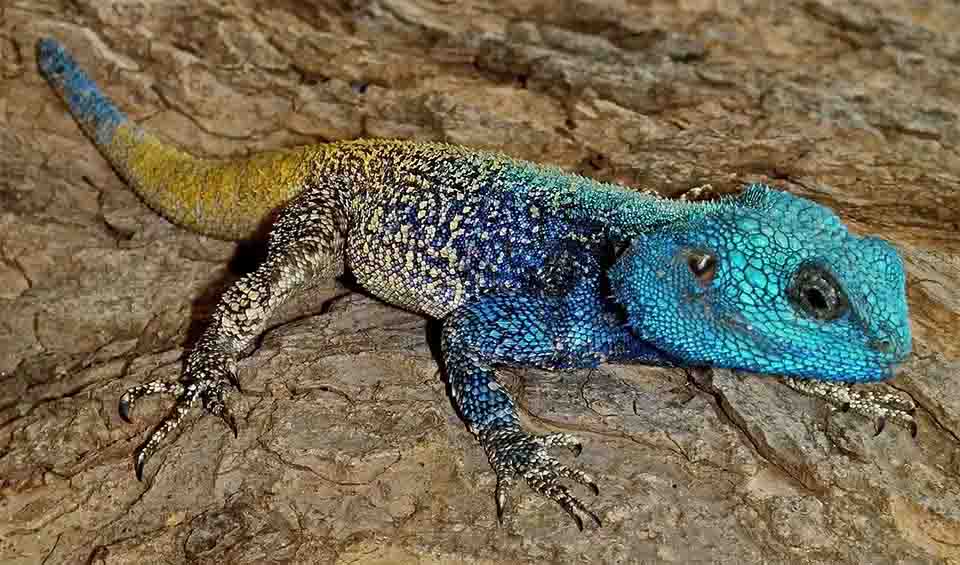Acanthocercus
Their spiny tails can be used as a defensive weapon, not only against predators but also against other rival lizards
These lizards are primarily found in East Africa, including countries like Kenya, Tanzania, and Ethiopia, where they live in a variety of habitats, from savannas to rocky hillsides and, as their name suggests, trees. They are known for their agility and striking appearance, making them a fascinating group of reptiles.
One of the most distinctive features of Acanthocercus lizards is their coloration, which varies depending on the species, gender, and season. Males are often more colorful than females, especially during the breeding season when they display vibrant shades of blue, green, or even orange to attract mates and establish dominance over other males. These bright colors are usually most prominent on the head and neck, while the body may have more muted tones, often with stripes or spots that help them blend into their environment. Females and younger lizards typically have less vivid colors, often in shades of brown or gray, which provides better camouflage against predators.
These lizards have bodies well-adapted for climbing, with strong limbs, sharp claws, and a long tail that helps them balance as they move through trees or across rocks. They are highly agile and can quickly dart up trees or scuttle over rocks when threatened. They are often seen basking in the sun on branches or rock surfaces, soaking up the warmth they need to stay active since, like all reptiles, they are cold-blooded and rely on external heat sources to regulate their body temperature.
Males are territorial and will often engage in displays to assert dominance and ward off rivals. These displays include head-bobbing, push-ups, and even changing colors to signal their strength and readiness to defend their territory. During the breeding season, these displays become even more pronounced as males compete for the attention of females. The dominant male in a territory is usually the most colorful and will actively patrol his area to keep other males away.
Species in this genus
Southern tree agama
Not only change color during breeding but also to express their emotional state


